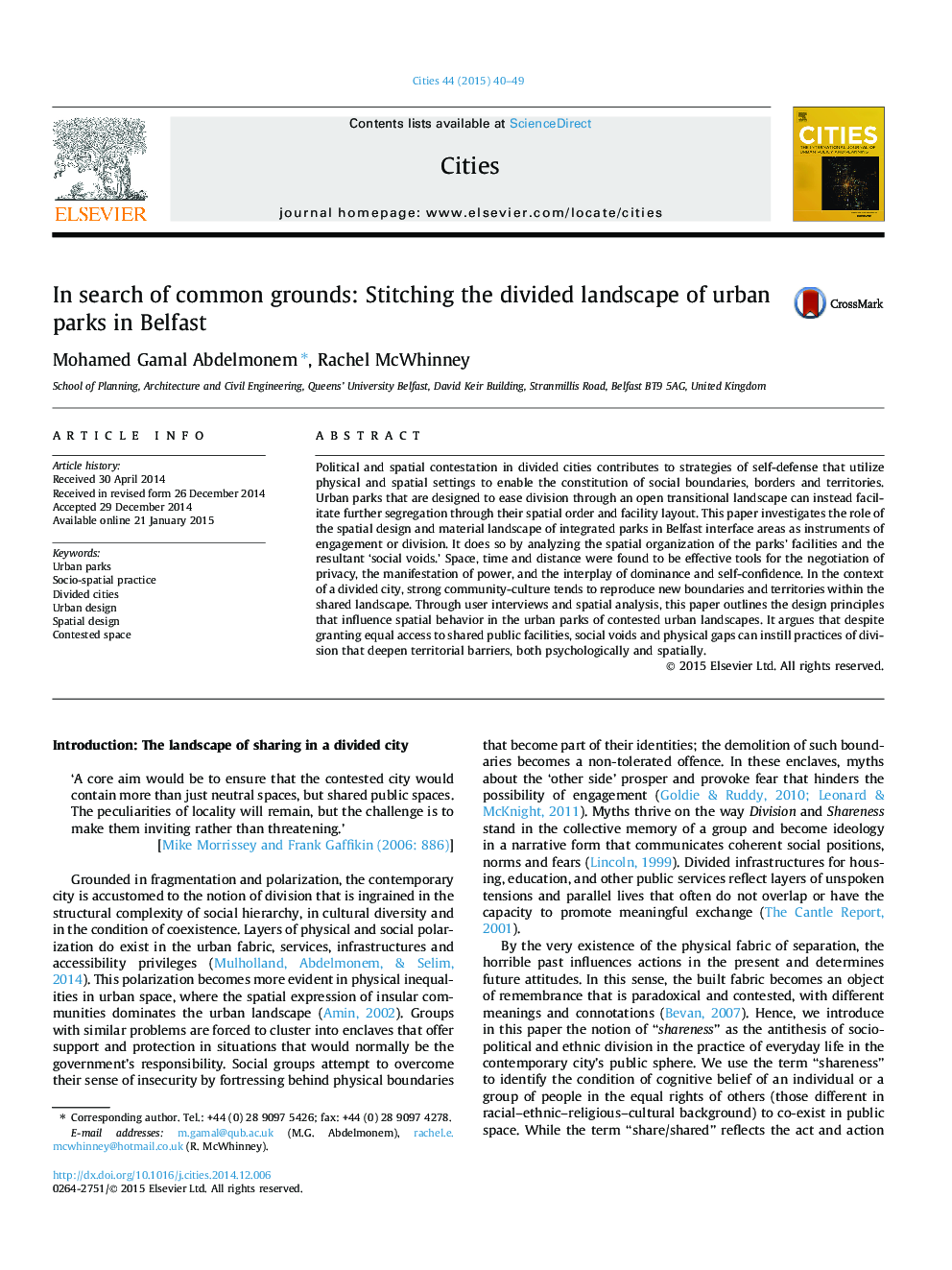| Article ID | Journal | Published Year | Pages | File Type |
|---|---|---|---|---|
| 1008313 | Cities | 2015 | 10 Pages |
•The landscape of sharing in a divided city.•Integrated parks as urban devices for sharing.•Spatial practice as indicators of territorial divide.•Design principles of urban parks in post-conflict cities.•Cognitive mapping as key to understand behavioural dynamics in community parks.
Political and spatial contestation in divided cities contributes to strategies of self-defense that utilize physical and spatial settings to enable the constitution of social boundaries, borders and territories. Urban parks that are designed to ease division through an open transitional landscape can instead facilitate further segregation through their spatial order and facility layout. This paper investigates the role of the spatial design and material landscape of integrated parks in Belfast interface areas as instruments of engagement or division. It does so by analyzing the spatial organization of the parks’ facilities and the resultant ‘social voids.’ Space, time and distance were found to be effective tools for the negotiation of privacy, the manifestation of power, and the interplay of dominance and self-confidence. In the context of a divided city, strong community-culture tends to reproduce new boundaries and territories within the shared landscape. Through user interviews and spatial analysis, this paper outlines the design principles that influence spatial behavior in the urban parks of contested urban landscapes. It argues that despite granting equal access to shared public facilities, social voids and physical gaps can instill practices of division that deepen territorial barriers, both psychologically and spatially.
